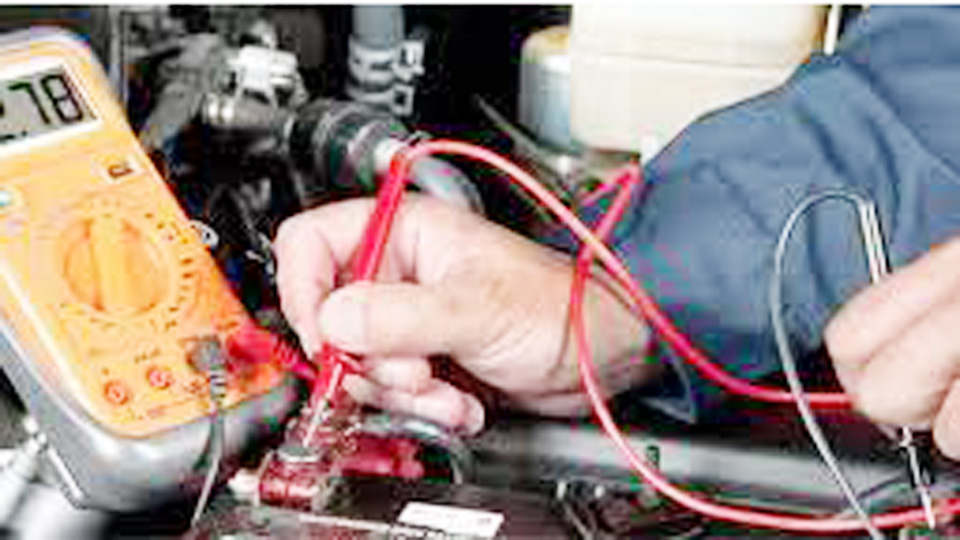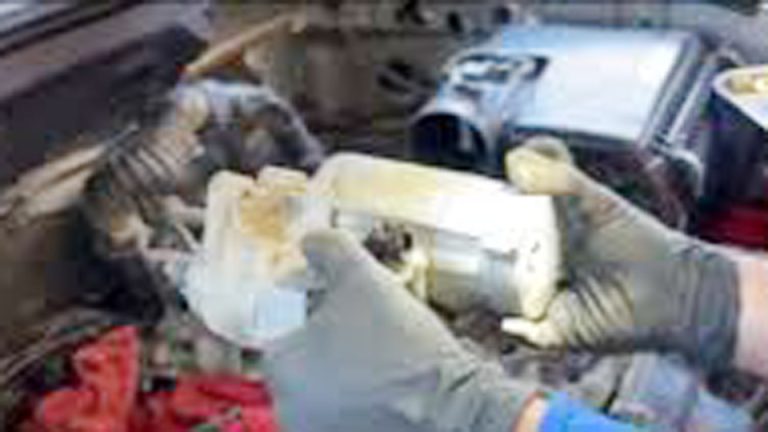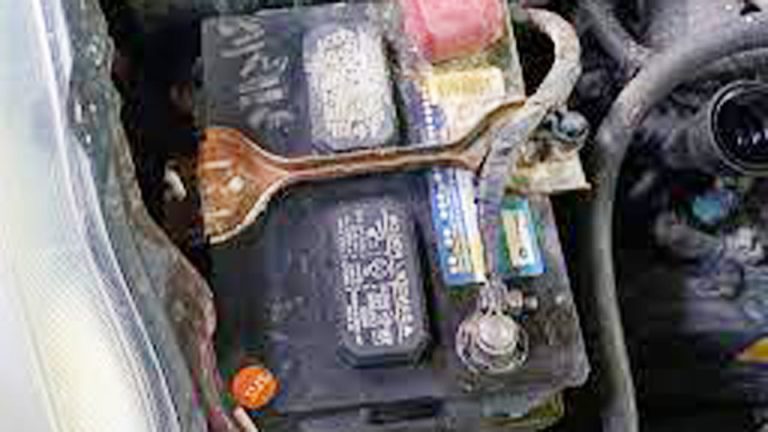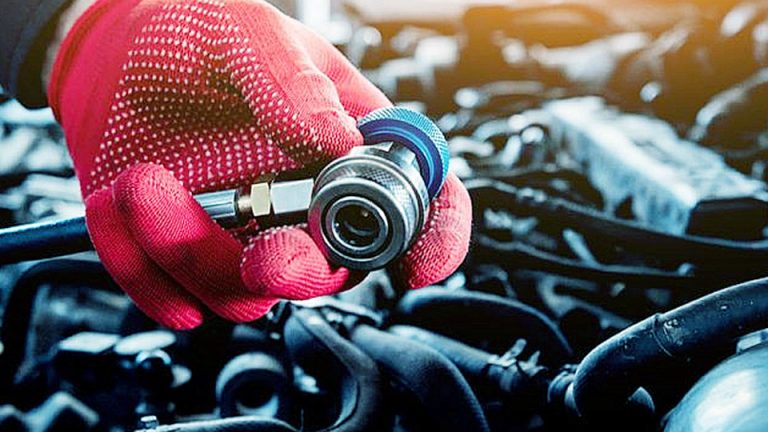You’re ready to hit the road, but your car won’t start, even though your battery tester shows a solid 12 volts. If you’re scratching your head and wondering can a car battery read 12V and still be bad, the answer is a resounding yes. As a car enthusiast who’s spent years tinkering with my Dodge Ram and helping friends troubleshoot their Chevys and Hondas, I’ve seen plenty of batteries that look fine on a voltmeter but fail to deliver when it counts.
A bad battery can leave you stranded on a snowy Minnesota morning or a scorching Arizona afternoon, so let’s dive into why this happens, how to diagnose it, and what you can do to keep your ride reliable across the USA’s diverse roads and climates.

Image by haynes
How Car Batteries Work
A car battery is the heart of your vehicle’s electrical system, providing the power to start the engine and run accessories like lights and the radio. Most cars use a 12-volt lead-acid battery, with six cells producing about 2.1 volts each when fully charged, totaling around 12.6–12.8 volts at rest. When you turn the key, the battery sends a surge of current (measured in amps) to the starter motor, which cranks the engine.
A voltmeter reading of 12 volts sounds good, but voltage alone doesn’t tell the whole story. A battery can hold a charge on the surface but fail to deliver enough current or sustain voltage under load. I learned this when my Ram’s battery read 12.2 volts but couldn’t start the truck after sitting overnight—it was toast.
Why It Matters: A bad battery can cause no-start issues, dim lights, or electrical glitches, compromising safety and convenience, especially on long drives or in extreme US weather.
Why a Battery Can Read 12V and Still Be Bad
A battery reading 12 volts might seem healthy, but several issues can render it useless. Here’s what I’ve seen in my garage and on the road.
Sulfation
Lead-acid batteries develop sulfate crystals on their plates over time, especially if left discharged or unused. This reduces the battery’s ability to hold or deliver a charge, even if it reads 12 volts at rest.
Real-World Example: My buddy’s Chevy Malibu sat for a month during a Michigan winter. The battery read 12.1 volts but wouldn’t crank—sulfation was the culprit.
Low Cranking Amps
Cold Cranking Amps (CCA) measure a battery’s ability to start the engine, especially in cold weather. A battery can read 12 volts but have low CCA due to age or internal damage, failing to provide the 200–800 amps needed to crank.
Internal Short Circuits
Damaged plates or separators inside the battery can cause internal shorts, draining capacity. The battery might show 12 volts at rest but drop voltage under load.
Weak Cell
One bad cell (producing less than 2.1 volts) can drag down the whole battery. It might still read close to 12 volts but fail when starting or running accessories.
Surface Charge
After charging or driving, a battery can show a “surface charge” of 12 volts that doesn’t reflect its true capacity. This fades quickly under load, revealing the battery’s weakness.
| Cause | Symptoms | Fix |
|---|---|---|
| Sulfation | Reads 12V, won’t crank | Desulfate or replace battery |
| Low Cranking Amps | Slow cranking, especially in cold | Replace battery |
| Internal Short | Voltage drops under load | Replace battery |
| Weak Cell | Inconsistent starting | Replace battery |
| Surface Charge | False 12V reading | Remove surface charge, retest |
Diagnosing a Bad Battery
To figure out if your 12-volt battery is bad, you need more than a voltmeter. Here’s how I diagnose it in my driveway, perfect for DIYers.
Step 1: Check Voltage at Rest
Use a multimeter ($10–$50, like a Fluke or Innova) to measure the battery’s voltage with the car off. A healthy battery reads 12.6–12.8 volts when fully charged. Below 12.4 volts indicates a partial charge; 12.0 volts or less suggests a deeper issue.
Pro Tip: Let the car sit for 12 hours to avoid surface charge, which can give a false high reading.
Step 2: Remove Surface Charge
If the battery was recently charged or driven, turn on the headlights for 2–3 minutes (engine off) to remove surface charge. Recheck voltage—it should stay above 12.4 volts.
Step 3: Perform a Load Test
Use a battery load tester ($50–$150, like a Schumacher) to apply a load (half the battery’s CCA rating) for 10–15 seconds. A good battery holds above 9.6 volts under load. If it drops below, it’s weak.
My Experience: My Ram’s battery read 12.3 volts but dropped to 8 volts under load. A load test confirmed it was done.
Step 4: Check Cranking Amps
If you don’t have a load tester, start the engine and listen. Slow cranking or clicking suggests low CCA. A shop can test CCA for $10–$30.
Step 5: Inspect Physical Condition
Look for:
- Corrosion: White or green buildup on terminals (common in salty states like New York).
- Leaks or Bulges: Cracks or swelling indicate internal damage.
- Loose Connections: Wiggle cables to ensure they’re tight.
Step 6: Test Charging System
A bad alternator or voltage regulator can mimic battery issues. With the engine running, measure voltage at the battery—it should be 13.5–14.5 volts. Below or above suggests alternator problems.
| Diagnosis Step | Tools Needed | Time | Cost |
|---|---|---|---|
| Check Voltage | Multimeter | 5 min | $10–$50 |
| Remove Surface Charge | Headlights | 3 min | $0 |
| Load Test | Load tester | 10 min | $50–$150 |
| Check Cranking Amps | None or shop test | 5–10 min | $0–$30 |
| Inspect Condition | Flashlight | 5 min | $0 |
| Test Charging System | Multimeter | 5 min | $10–$50 |
Fixing a Bad Battery
Once you confirm the battery’s bad, here’s how to fix it, based on my years of wrenching.
Try Desulfating
For sulfated batteries, a desulfator or smart charger (like a NOCO Genius, $50–$100) can sometimes restore capacity. Connect the charger and run a desulfation cycle (24–48 hours). If it doesn’t improve cranking, replace the battery.
Cost: $50–$100 for a charger.
Replace the Battery
Most bad batteries need replacement:
- Choose a Battery: Match your car’s group size (check the manual) and CCA (500–800 for most cars). Brands like Optima, DieHard, or Interstate are reliable.
- Disconnect Old Battery: Remove the negative cable first, then positive, to avoid shorts.
- Remove Battery: Unbolt the hold-down clamp and lift out the battery.
- Install New Battery: Place the new battery, secure it, and connect positive, then negative cables.
- Test: Start the car and check voltage (12.6–12.8 volts at rest).
Cost: $100–$250 for a quality battery.
My Experience: I swapped my Ram’s battery for a DieHard Gold ($150). It’s been cranking strong for three years, even in cold winters.
Clean Terminals
If corrosion is causing issues:
- Disconnect Battery: Negative first, then positive.
- Clean Terminals: Use a wire brush and baking soda solution to remove corrosion.
- Apply Grease: Coat terminals with dielectric grease ($5) to prevent future buildup.
- Reconnect: Positive first, then negative.
Cost: $5–$10 for brush and grease.
Check Charging System
If the alternator’s faulty:
- Test Voltage: As above, check for 13.5–14.5 volts with the engine running.
- Replace Alternator: If voltage is off, replace the alternator ($100–$400, plus $100–$200 labor if not DIY).
Warning: Don’t drive with a bad battery for long—it can damage the alternator or leave you stranded.
| Fix | Time | Cost | Difficulty |
|---|---|---|---|
| Desulfate Battery | 24–48 hours | $50–$100 | Easy |
| Replace Battery | 30–60 min | $100–$250 | Easy |
| Clean Terminals | 15–20 min | $5–$10 | Easy |
| Replace Alternator | 2–4 hours | $200–$600 | Advanced |
Choosing a Quality Battery
A good battery prevents future issues. Here’s what I look for:
- Group Size: Matches your car’s tray (e.g., Group 24, 35, or 65—check the manual).
- CCA Rating: 500–800 CCA for most US cars, higher for trucks or cold climates.
- Type: AGM (Absorbed Glass Mat, like Optima) for durability, or standard lead-acid (like DieHard) for budget.
- Warranty: 2–3 years free replacement for peace of mind.
My Pick: DieHard Gold ($150) for reliability in my Ram, or Optima RedTop ($250) for high-performance needs.
Maintenance Tips for Battery Health
Keep your battery happy with these habits, tailored for US conditions:
- Check Voltage Monthly: Use a multimeter to catch issues early.
- Clean Terminals Annually: Especially in salty states like Michigan to prevent corrosion.
- Secure the Battery: Ensure the hold-down clamp is tight to avoid vibration damage on bumpy roads.
- Avoid Short Trips: Frequent short drives (common in urban areas) don’t fully charge the battery. Take a 20-minute drive weekly.
- Store Properly: In hot climates like Arizona, store spare batteries in a cool place to extend life.
Real-World Example: My CR-V’s battery died early because I only drove short trips in the city. A weekly highway drive could’ve saved it.
Battery Issues in US Driving Conditions
US roads and climates stress batteries differently:
- Cold Climates (e.g., Minnesota): Cold reduces CCA, making starting harder. Use a high-CCA battery and park in a garage.
- Hot Climates (e.g., Texas): Heat speeds up sulfation and corrosion. Check fluid levels in non-sealed batteries monthly.
- Urban Areas (e.g., Chicago): Stop-and-go traffic and short trips drain batteries. Use an AGM battery for better resilience.
- Rural Roads (e.g., Montana): Long drives are good for charging, but dust can clog terminals. Clean regularly.
Common Mistakes to Avoid
- Relying on Voltage Alone: A 12V reading doesn’t mean the battery’s good. Always load test.
- Ignoring Corrosion: Buildup on terminals reduces performance. Clean it promptly.
- Buying Cheap Batteries: Bargain brands fail faster. Spend $100–$250 for quality.
- Leaving Accessories On: Draining the battery (e.g., lights left on) shortens its life.
- Skipping Alternator Checks: A bad charging system kills batteries. Test it if issues persist.
My Experience: I ignored corrosion on my Malibu’s terminals, thinking it was minor. The battery died a month later—a $10 cleaning could’ve prevented it.
Jump-Starting Safely
If your battery’s bad and you need a quick fix:
- Connect Cables: Red to positive on dead battery, red to positive on good battery, black to negative on good battery, black to unpainted metal on dead car.
- Start Good Car: Let it run for 2–3 minutes.
- Start Dead Car: If it doesn’t crank, wait 5 minutes and try again.
- Remove Cables: Black first, then red.
Cost: $20–$50 for jumper cables.
Warning: Don’t jump-start a battery with visible damage (leaks, cracks)—it can spark or explode.
When to Replace vs. Recharge
- Recharge: If voltage is below 12.4 volts but the battery passes a load test, use a smart charger ($50–$100) for 6–12 hours.
- Replace: If the battery fails a load test, won’t hold a charge, or is over 3–5 years old, get a new one.
Real-World Tip: I tried recharging a 5-year-old battery in my Mustang. It held 12V for a day but failed again. Replacement was the only fix.
Conclusion
A car battery can read 12 volts and still be bad, leaving you stranded if you don’t dig deeper. Sulfation, low cranking amps, or internal damage can hide behind a seemingly okay voltage reading. By load testing, checking connections, and maintaining your battery, you can avoid no-start surprises, whether you’re braving icy Midwest winters or scorching desert summers.
Keep a portable jump starter ($50–$100, like a NOCO Boost) in your trunk. It’s a lifesaver for unexpected battery failures on the road.
FAQ
Can a car battery read 12V and not start the car?
Yes, a battery can read 12V but lack the cranking amps or capacity to start the engine due to sulfation, a weak cell, or internal damage. Load test it to confirm.
How do I know if my battery is bad?
Check voltage (below 12.4V is suspect), perform a load test, and inspect for corrosion or damage. Slow cranking or dim lights are also signs.
How much does a new car battery cost?
A quality battery costs $100–$250, depending on size and type (lead-acid or AGM). Brands like DieHard or Optima are reliable.
Can a bad alternator cause a false 12V reading?
Yes, a failing alternator may not charge the battery properly, causing it to read 12V but fail under load. Test charging voltage (13.5–14.5V).
How often should I replace my car battery?
Most batteries last 3–5 years. Replace if it fails a load test, struggles to start, or is over 5 years old, especially in extreme US climates.




